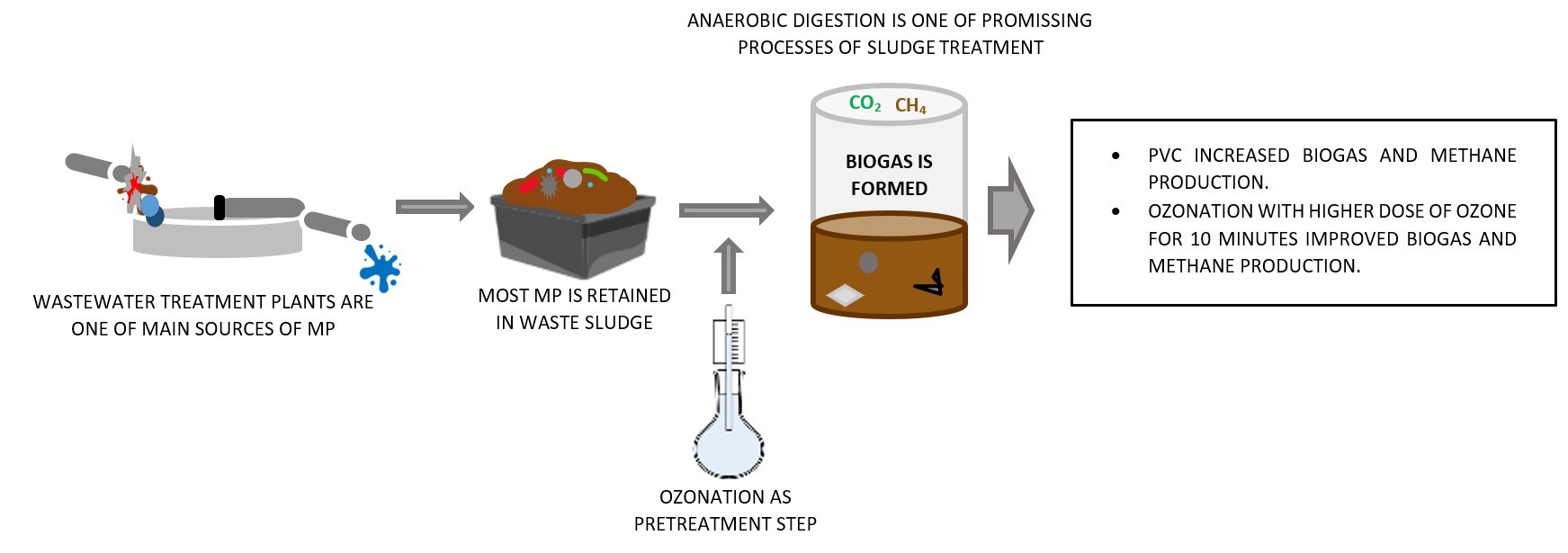
ABSTRACT Plastic pollution is increasing and plastic waste usually ends in environment. Microplastics (MP) as insoluble and anthropogenic micropollutant is ubiquitous and its concentration is expected to increase in the environment. One of important sources are wastewater treatment plants, where most of MP end in waste sludge. Promising technology for stabilization of waste sludge and reducing the volume and odor is anaerobic digestion, where anaerobic microorganisms digest organic matter and form biogas. The aim of this work was to evaluate inhibition on formed biogas and methane yield with and without ozonation of contaminated waste sludge with Polyvinylchloride (PVC). The inhibition of anaerobic microorganisms was determined by OxiTop® method, where biogas production was measured in terms of increased pressure (hPa). PVC increased biogas production up to 27% followed by increased CH4 production (up to 18%). Ozonation as a sludge pretreatment method, could inhibit or increase CH4 yield, depending on ozone dose (3.54 g h-1; lower dose or 3.99 g h-1; higher dose) and time of exposure to ozone (from 10 to 20 min). Higher dose of ozone with 10 minutes of ozonation, showed as the most efficient and improved biogas production up to 15% and CH4 production up to 14%.
Total file downloads: 12